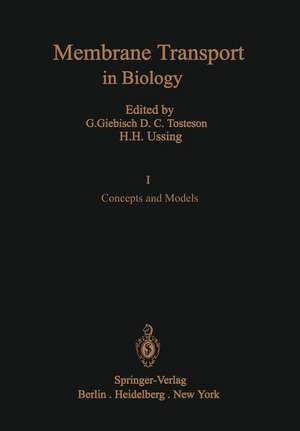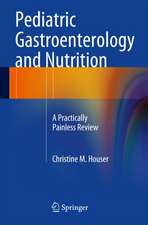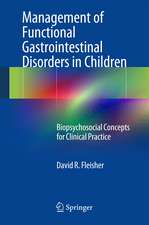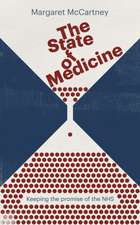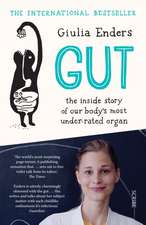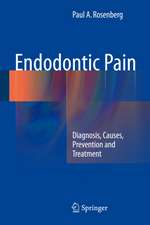Concepts and Models: Membrane Transport in Biology, cartea 1
Editat de D. C. Tostesonen Limba Engleză Paperback – 9 mar 2012
Preț: 734.57 lei
Preț vechi: 773.23 lei
-5% Nou
Puncte Express: 1102
Preț estimativ în valută:
140.58€ • 146.22$ • 116.05£
140.58€ • 146.22$ • 116.05£
Carte tipărită la comandă
Livrare economică 14-28 aprilie
Preluare comenzi: 021 569.72.76
Specificații
ISBN-13: 9783642463723
ISBN-10: 364246372X
Pagini: 564
Ilustrații: XX, 540 p.
Dimensiuni: 170 x 244 x 30 mm
Greutate: 0.89 kg
Ediția:Softcover reprint of the original 1st ed. 1978
Editura: Springer Berlin, Heidelberg
Colecția Springer
Seria Membrane Transport in Biology
Locul publicării:Berlin, Heidelberg, Germany
ISBN-10: 364246372X
Pagini: 564
Ilustrații: XX, 540 p.
Dimensiuni: 170 x 244 x 30 mm
Greutate: 0.89 kg
Ediția:Softcover reprint of the original 1st ed. 1978
Editura: Springer Berlin, Heidelberg
Colecția Springer
Seria Membrane Transport in Biology
Locul publicării:Berlin, Heidelberg, Germany
Public țintă
ResearchCuprins
1 — Membrane Transport in Biology.- 2 — Passive Transport Processes.- A. Introduction.- B. Fundamental Definitions.- C. Diffusion Processes: Macroscopic Treatment.- D. Diffusion Processes: Microscopic Aspects.- E. Diffusion and Superimposed Convection.- F. Electrodiffusion.- Acknowledgements.- List of Symbols.- References.- 3 — Interpretation of Tracer Fluxes.- A. Introduction.- B. Fundamental Concepts.- C. Tracer Permeability Coefficients.- D. The Concept of Unidirectional Flux.- E. Flux Ratio Analysis.- F. Examples.- G. Concluding Remarks.- References.- 4 — Nonequilibrium Thermodynamics of Isotope Flow through Membranes.- A. Introduction.- B. The System: Definitions and Mathematical Techniques.- C. Nonthermodynamic Considerations of Isotope Flow.- D. The Nonequilibrium Thermodynamic Approach.- E. Applications to Model Systems.- F. Summary.- Acknowledgements.- List of Symbols.- References.- 5 — Use of Microelectrodes for Measurement of Membrane Potentials.- A. Introduction.- B. Principles of Bioelectric Recording.- C. The Glass Capillary Microelectrode.- D. Potential Recording with Microelectrodes.- E. Epilogue.- Acknowledgements.- References.- 6 — Chemical Composition of Membranes.- A. Introduction.- B. Some General Observations on Erythrocyte Composition.- C. Comments on Major Components of the Erythrocyte Membrane.- References.- 7 — Genetic Determination of Membrane Transport.- A. Introduction.- B. Microorganisms.- C. Higher Organisms.- D. Cultured Somatic Cells.- E. Conclusions.- References.- 8 — Mechanisms of Ion Transport and ATP Formation.- A. Translocation of Protons by the Oxidation Chain of Mitochondria and Chloroplasts.- B. The Translocation of Protons by Bacteriorhodopsin.- C. The Translocation of Protons by the Oligomycin- orDicyclohexylcarbodiimide-Sensitive ATPase of Mitochondria, Chloroplasts and Bacteria.- D. Translocation of Calcium by the ATPase Complex of Sarcoplasmic Reticulum.- E. Translocation of Sodium and Potassium Ions by the ATPase Complex of the Plasma Membrane.- F. Concluding Remarks.- Acknowledgement.- Abbreviations.- Addendum.- References.- 9 — Membrane Immunological Reactions and Transport.- A. Introduction: The Concept.- B. Immunological Reactions and Membrane Transport Proteins.- C. Immunological Reactions at the Outer Membrane Surface and Cation Transport in Erythrocytes.- D. Membrane Immunological Reactions and Cation Transport in Lymphocytes and Other Cells.- E. Summary and Prospectus.- Acknowledgement.- References.- 10 — Membrane Receptors, Cyclic Nucleotides, and Transport.- A. Introduction.- B. Beta-Adrenergic-Receptor Binding in Avian and Amphibian Erythrocytes.- C. Beta-Adrenergic-Mediated Transport Processes in Avian and Amphibian Erythrocytes.- D. The Amphibian Bladder.- E. Cholera Enterotoxin.- F. The Superior Cervical Ganglion.- G. Nicotinic Cholinergic Receptors.- H. The Heart.- J. General Comments and Conclusions.- References.- 11 — Permeability Properties of Unmodified Lipid Bilayer Membranes.- A. Introduction.- B. Lipid Bilayer Membranes.- C. Transport Model and the Potential Energy Barrier.- D. Permeability to Neutral Solutes.- E. Ion Permeability.- Acknowledgements.- References.- 12 — Carrier-Mediated Ion Transport Across Thin Lipid Membranes.- A. Introduction.- B. Carriers of Hydrogen Ions.- C. Macrocyclic Carriers.- D. The Iodide-Iodine System.- E. The Carrier-Transport Model.- F. Biological Implications.- References.- 13 — Channels in Black Lipid Films.- A. Introduction.- B. Basic Experiments.- C. Advanced Experiments.- D. PossibleMolecular Mechanisms of Pore Formation.- Acknowledgements.- References.
